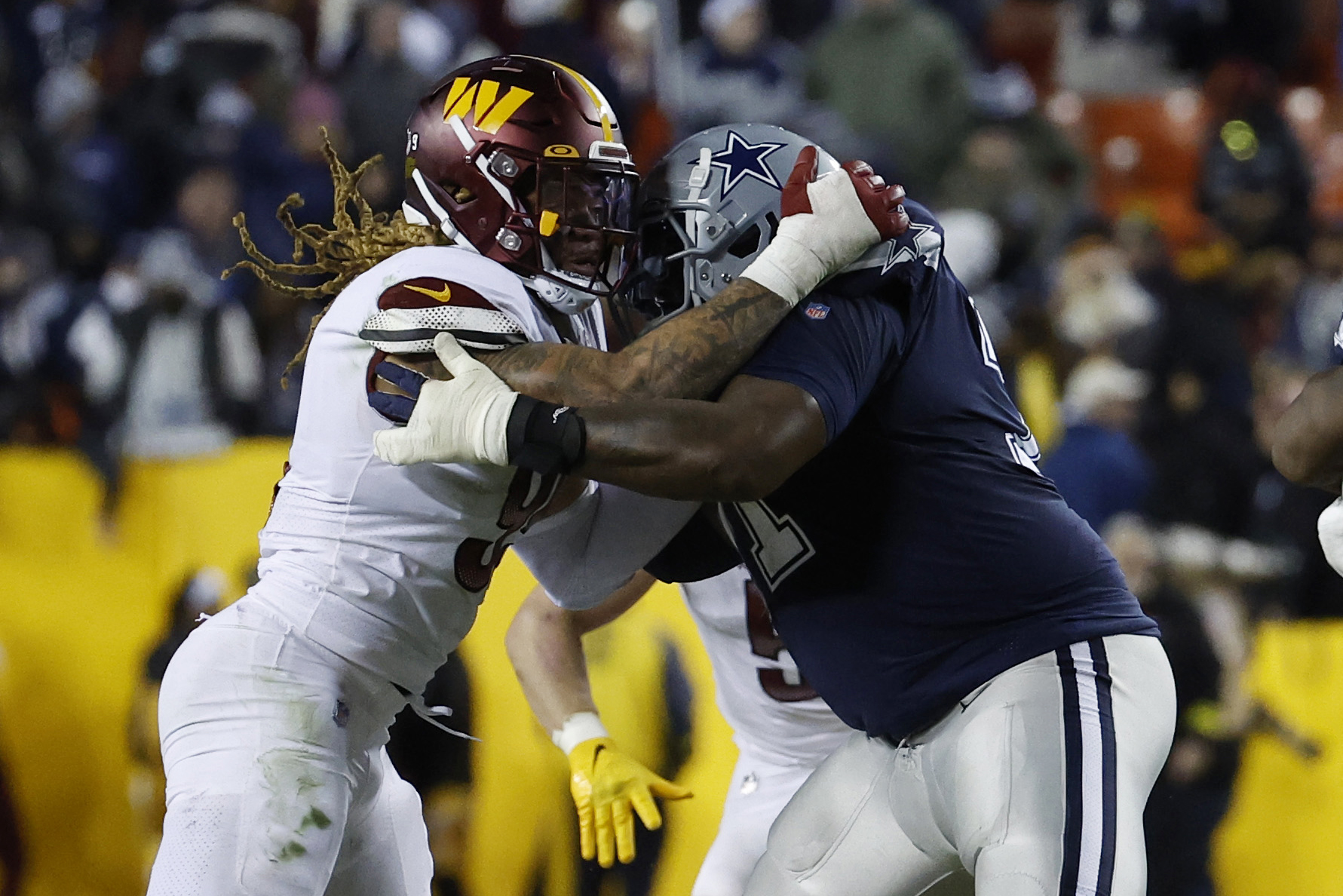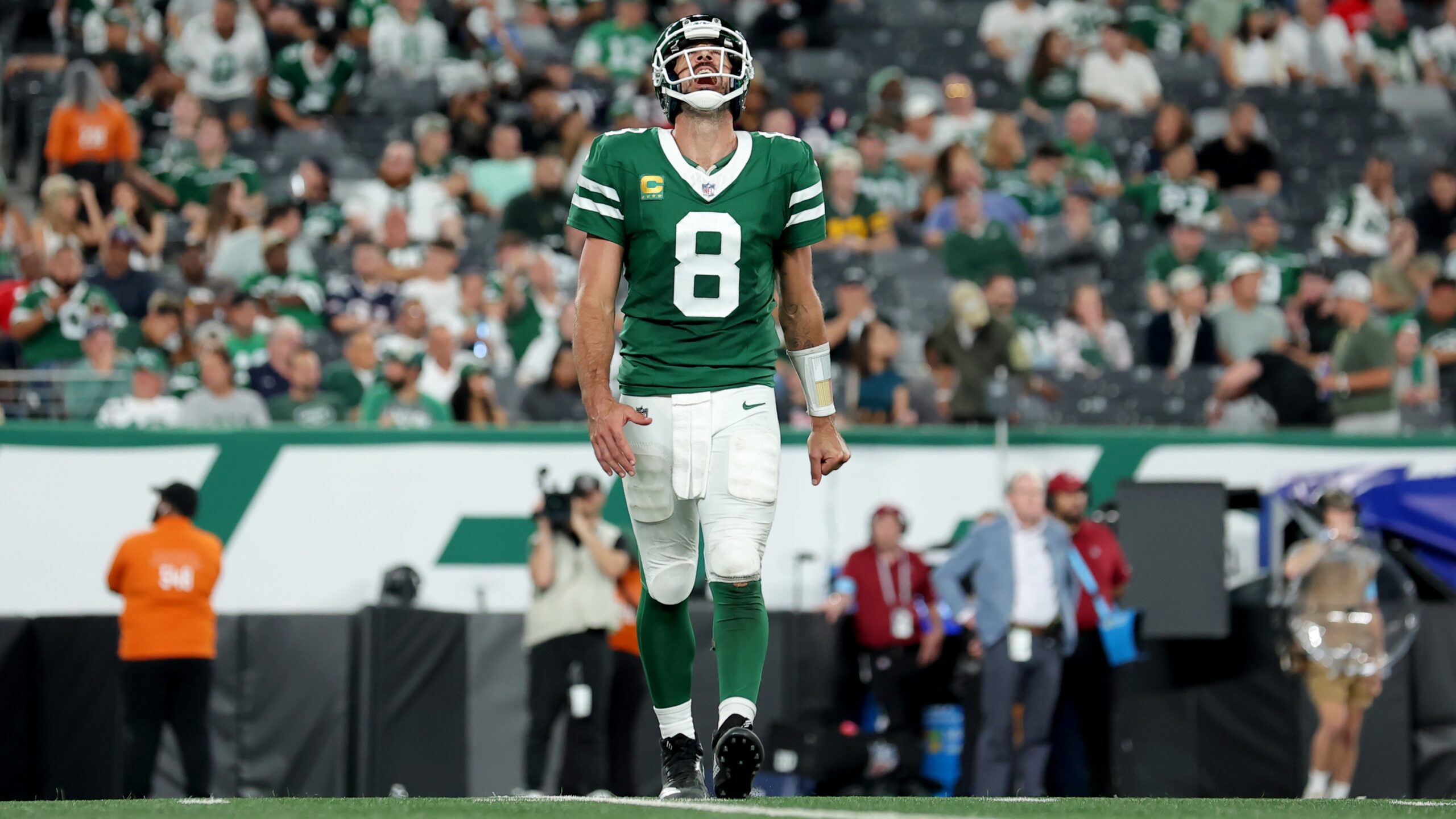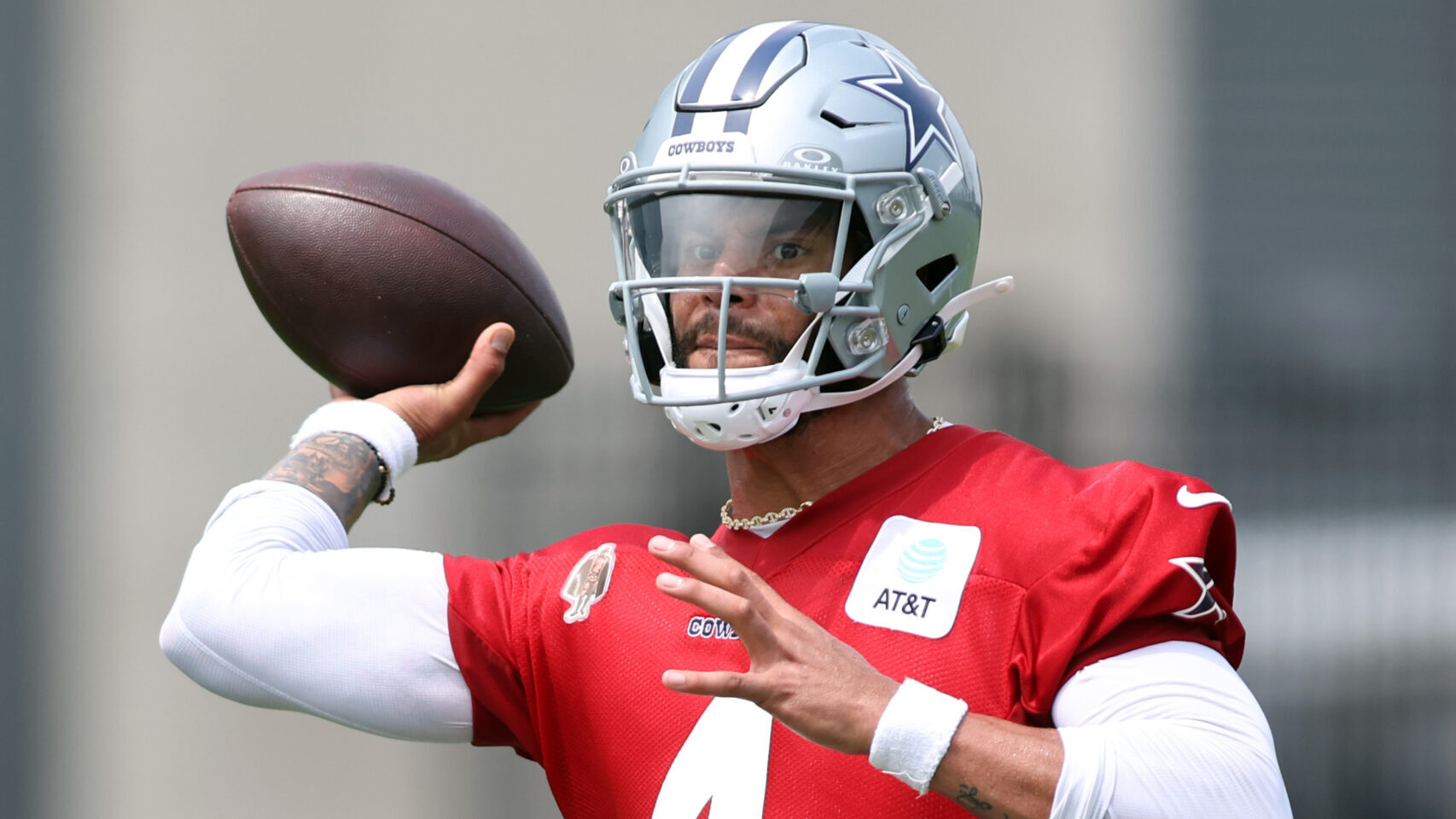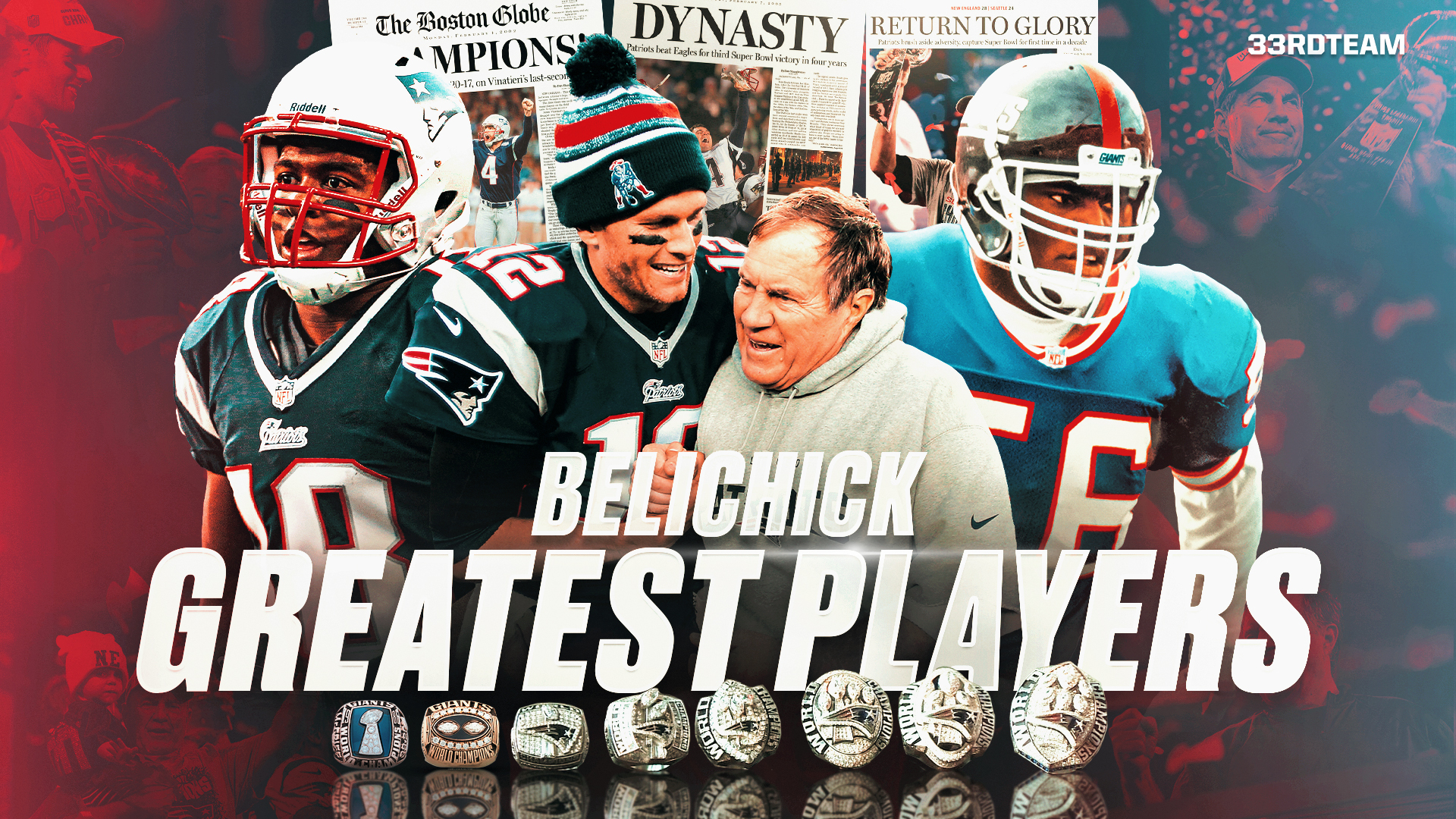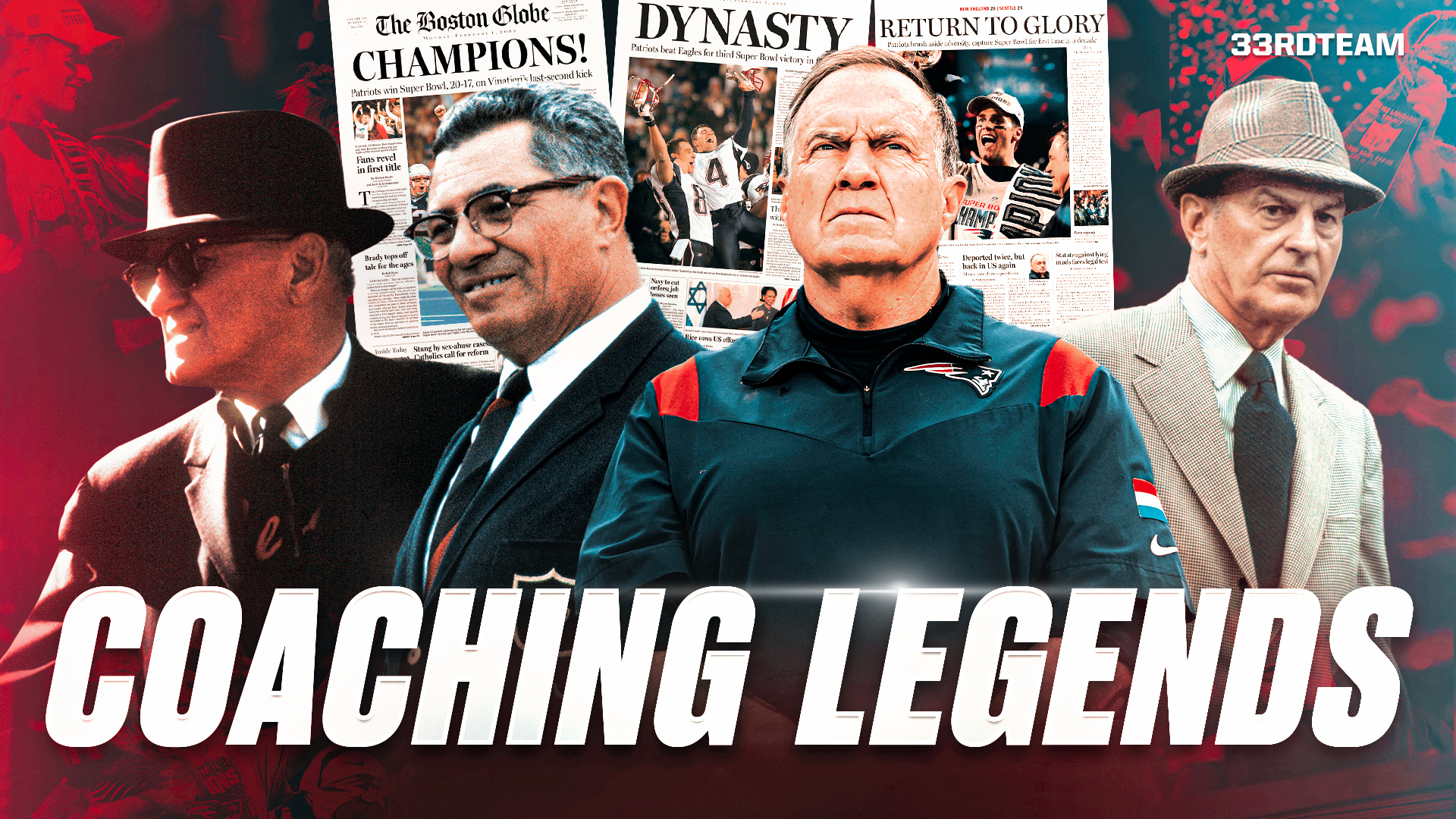Analysis
9/8/23
17 min read
NFL Players, Coaches With the Most on the Line in 2023
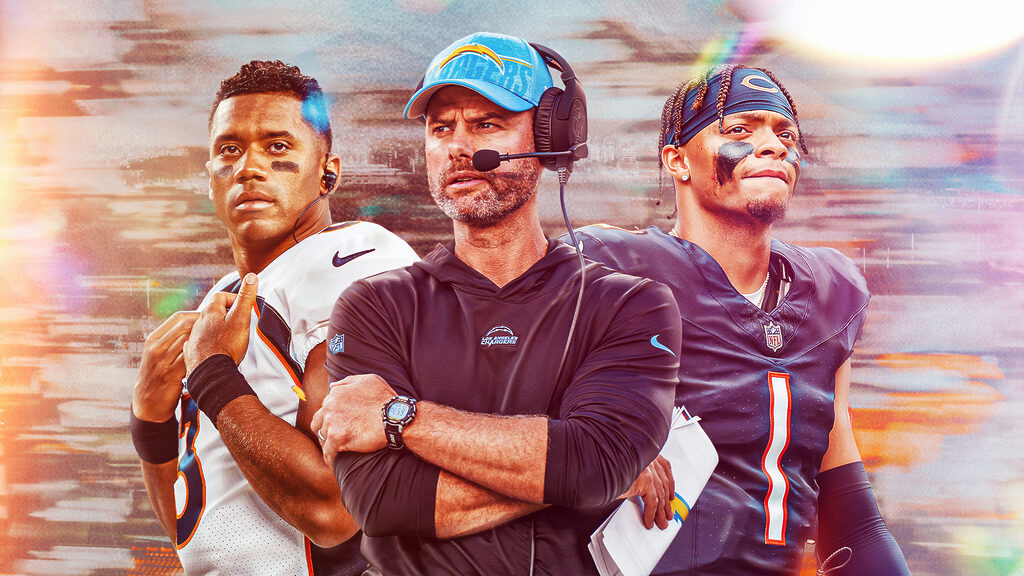
The NFL is a ruthless league. As much as football is about culture, chemistry and all that good stuff, it's a business, at the end of the day. Results are king. Players and coaches alike are only afforded so much time before the plug gets pulled.
Today, we will look at who has the most at stake going into this season. For the sake of the exercise, we're going to focus on players and coaches whose season could break either way.
For example, Washington Commanders head coach Ron Rivera has a lot on the line in 2023, but the deck is stacked against him given the team’s quarterback situation and the fact that Washington plays in a loaded NFC East. The same is true of Baker Mayfield trying to remain the Tampa Bay Buccaneers’ starting quarterback. There's no point dwelling on coaches and players teetering toward being replaced even before the season starts.
Who Has a Lot On the Line this Season?
 Justin Fields, QB
Justin Fields, QB
Justin Fields was dead in the water as a rookie. The Chicago Bears' offensive line was an unmitigated disaster across the board, and none of his pass-catchers would have been more than a No. 3 option on a good offense. Coach Matt Nagy also didn't call an offense that suited Fields' downfield skill set at all. Fields was doomed to fail.
Year 2 was supposed to be a reset. The Bears brought in a new play-caller in Luke Getsy, formerly the Green Bay Packers' quarterbacks coach. In contrast to Nagy's offense, Getsy's system relies heavily on being under center, running the ball and simplifying things for the quarterback with boots and play-action shots. Getsy also incorporated the quarterback run game to fit Fields' skill set.
The new system helped to a degree. The Bears' offense went from being an embarrassment to being a feisty, wear-you-down unit. While inconsistent, the flashes of functional offense were a godsend compared with the team's 2021 campaign.
However, much of Chicago's offensive improvement was less about Fields improving and more about better protecting him from his weaknesses. Fields was still a terrible passer from within the pocket; that's why the Bears rolled him out or let him scramble as much as they did.
According to Sports Info Solutions, 38 quarterbacks registered at least 100 drop backs from the pocket without play-action. Those are more or less all the plays without training wheels. Fields ranked last in positive play rate (35.8 percent) and second-to-last in total expected points added (EPA) with -76.69 on those drop backs. He also had the highest bust rate (30.5 percent), which are plays that earn at least -1 EPA.
Fields' film is almost as bad as his numbers. While he does flash incredible arm talent and tight-window ability, he isn't close to being a complete passer.
Fields struggles throwing quick-game in part because his trigger and throwing motion are so slow. Fields also doesn't process fast enough right now. He is always hanging on to reads down the field, which is part of why he gets sacked at an ungodly rate.
Fields needs to undergo the same maturation process of speeding up and checking down that we've seen from Josh Allen and Joe Burrow. It's hard to run a consistent passing offense when the quarterback can't make any of the high-percentage plays.
This has to be the year for Fields. All the rushing talent in the world isn't enough if he can't be even an average passer. The offensive line is (slightly) improved, and he has a real No.1 receiver in D.J. Moore. Fields has another year in the system under his belt, too. If he can't find himself as a passer now, it will be time for the Bears to move on.
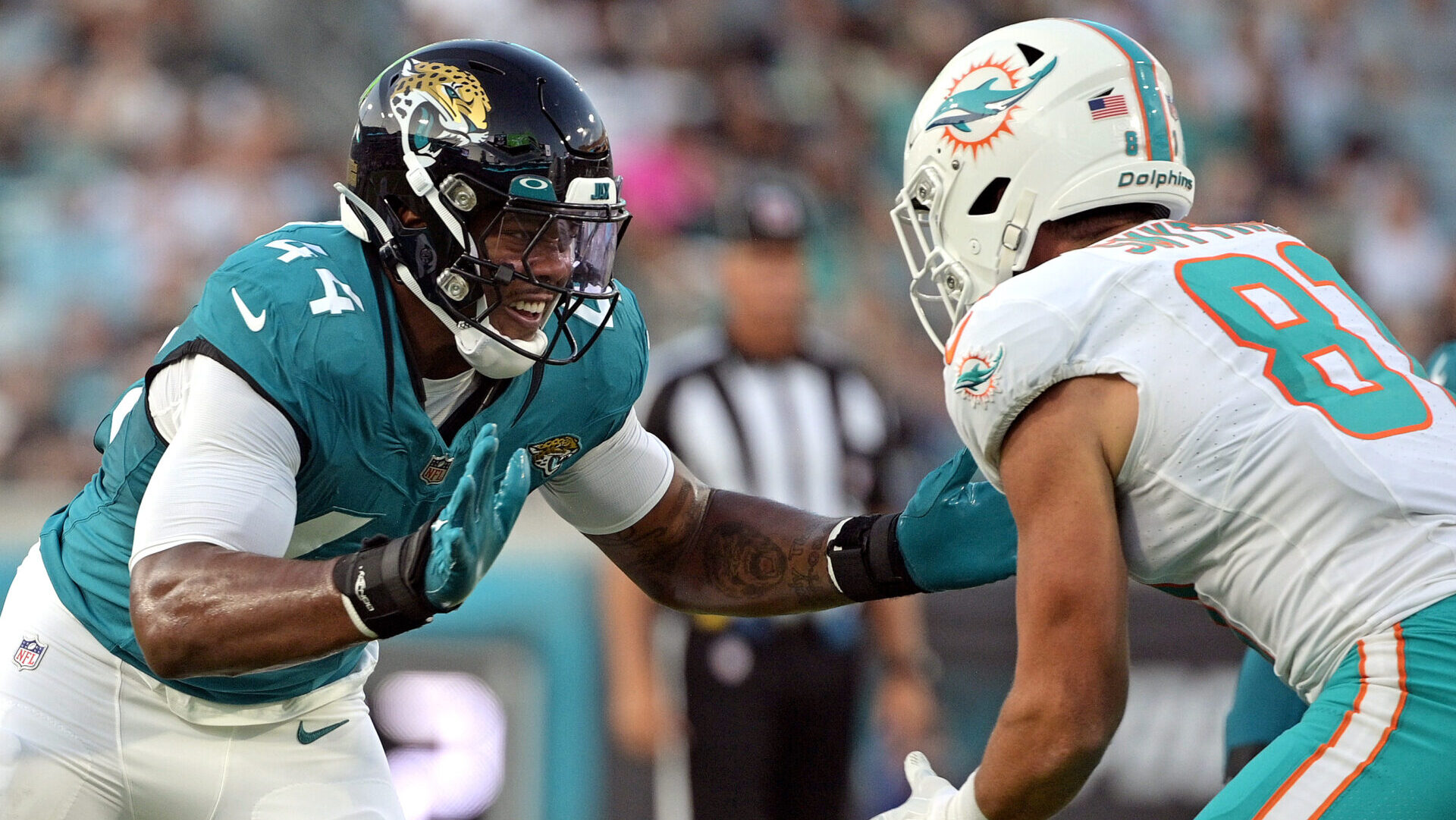
 Travon Walker, DE
Travon Walker, DE
It's easy to understand why the Jacksonville Jaguars drafted Travon Walker first overall a year ago. There aren't many 6-foot-5, 272-pound defensive ends with a 95th-percentile wingspan and 4.51 40-yard speed. He was an athletic marvel at a position where elite athletic traits usually translate to production right away.
That's not been the case for Walker. Not yet, anyway. Walker finished with just 3.5 sacks as a rookie, which puts him in concerning company.
According to Pro Football Reference, 38 defensive ends or outside linebackers have been drafted in the top 10 since 2000. Twenty-three of them had at least four sacks. Of the players with 3.5 sacks or less, only three of them went on to make a Pro Bowl at any point in their career: Richard Seymour, Leonard Williams and Jadeveon Clowney.
Seymour and Williams are more 3-4 base ends than edge rushers. They don't really count when discussing an edge prospect such as Walker. Meanwhile, Clowney missed most of his rookie season because of injury. There's little doubt that a healthy Clowney would have cleared the four-sack threshold.
We can quibble about whether or not a half-sack is really the difference between Walker being doomed or not, but it's a weirdly definitive split.
Walker has to develop a real pass-rush move if he wants to break the mold. All he has in his arsenal right now is a bull rush. That was fine for dominating lesser athletes in college, but even average NFL offensive tackles are too athletic and too prepared for such a linear approach. Walker must find ways to better use his bend around the edge and inside with counter moves.
The silver lining with Walker is that he can still affect the quarterback in some ways. His bull rush is effective, even if that's all he has right now. Per Pro Football Reference, Walker had 21 pressures on the season. While far from spectacular, that's the same amount as Demarcus Lawrence, Brandon Graham, Charles Omenihu and George Karlaftis. Teams draft pass-rushers in the top 10 to bring down the quarterback, but crushing the pocket is still a valuable skill.
Walker isn't in any immediate danger of losing his job. He's not a bad player. It's more that Walker is in danger of failing to live up to his draft slot. Star pass-rushers tend to make it clear that they are special sooner rather than later.
If things don't change for Walker this season, it's more likely that he becomes a Trey Flowers–type player than a true ace pass-rusher. There's nothing wrong with that in a vacuum, but that's not what you spend the first-overall pick on.
 Russell Wilson, QB
Russell Wilson, QB
The Denver Broncos spent two first-round picks, two second-round picks, a fifth-round pick and $242 million to acquire Russell Wilson last offseason. Wilson was supposed to be the pièce de résistance that put the Broncos over the top as Super Bowl contenders. Instead, Wilson's first year in Denver was one of the most expensive failures the league has ever seen.
Lucky for Denver, there's reason to believe he wasn't the main problem. Wilson deserves a portion of the blame, of course, but there weren't any other adults in the room to hold the operation together. The Nathaniel Hackett–led coaching staff didn't take any of the right steps to enable Wilson.
Wilson's best days in Seattle almost all featured a strong running game — or at least a strong commitment to the run game. The benefits of a reliable rushing attack are the exact things that set Wilson up for success.
For one, a strong run game can replace quick passing as the offense's means for short, efficient gains. That's a plus for Wilson, who isn't the sharpest quick-game operator.
A strong run game can also be the foundation for a deadly play-action package. Granted, that requires the play caller to tie run and pass concepts together effectively to keep defenses guessing. Hackett struggled to do that. In turn, Wilson produced the second-worst total EPA (-21.92) on play-action passes last season, per Sports Info Solutions. Only the corpse of Matt Ryan was worse.
Efficient gains on the ground also lead to more comfortable down-and-distance situations. Wilson abused the freedom of those opportunities in Seattle. He regularly took calculated risks outside the pocket and hunted for big plays, knowing that the drive might still be salvageable if things went wrong on that particular play.
Last year in Denver, however, many of Wilson's attempts to create outside the pocket were hero moments. He felt the pressure to make something happen in a lifeless offense. Such is the burden of a quarterback expected to be the savior of a franchise. Unfortunately, things took a turn for the worse as a result. Wilson's -37.27 EPA outside the pocket was second-worst in the league last season.
Coach Sean Payton has the goods to change all of that. Payton is one of this generation's greatest offensive minds and has shown that in various ways: Early-era Drew Brees, late-era Drew Brees, Teddy Bridgewater, Jameis Winston and even Taysom Hill are all wildly different quarterbacks. Yet Payton never struggled to support them and craft an offense around their strengths.
There shouldn't be any doubt that Payton can do the same for Wilson. Now it's on Wilson to make good on the opportunity and prove that last year was an aberration. If Wilson struggles again, chances are it'll be him on the way out of Denver this time, not the head coach.
 Chase Young, DE
Chase Young, DE
Chase Young is a tragic figure. The 2020 second-overall pick, Young burst onto the scene as a rookie with all the firepower we expected of him. Young secured 7.5 sacks on his way to a Pro Bowl nod and the Defensive Rookie of the Year title. It felt like Young immediately cemented himself as a cornerstone piece for the Commanders' defense.
Everything since then has been a downward spiral.
Young's lackluster 1.5-sack season in 2021 came as a surprise. Coaching was partly to blame. Washington's pass-rush plan that season was as unimaginative as it gets. The Commanders preferred to rush their base-four pass-rushers and didn't run nearly enough twists and stunts to get anyone free. As a result, none of the Commanders' pass-rushers were particularly productive that season.
That doesn't explain it all, though.
After tearing through offensive tackles with powerful hands and an explosive first step as a rookie, Young didn't have the same pop in his sophomore season. He wasn't playing with the same "run through your face" energy he had early on. His 9.6 percent pressure rate, according to Sports Info Solutions, was in the same range as bench players such as A.J. Epenesa and Alex Okafor. That's baffling for a player who looked like a star right away as a rookie.
Young's 2021 season was cut short nine games due to an ACL tear and a ruptured patella tendon. The recovery period from those injuries bled deep into the 2022 season. Young only played the final three games of last season, recording just one quarterback hit and zero sacks. Unsurprisingly, he still looked nothing like the player who took the league by storm in 2020.
We all know what Young can be. Maybe he will never reach the All-Pro ceiling it looked like he had at first, but there's still a talented pass-rusher in there somewhere. This is Young's chance to put together a full season and reestablish himself as an impact player in this league. The difference between a good and bad season for Young could be the difference of tens of millions of dollars.
 Brandon Staley, HC
Brandon Staley, HC
Let's get this out of the way on the front end: Brandon Staley is a good coach. He's at least partly responsible for the league's defensive meta. A few of his specific game plans over the years, namely last year's game against the Dolphins, have been masterclasses. Staley was also at the forefront of aggressive coaching decisions back in 2021. There's a lot he does right.
But he's not perfect. Staley is a young, first-time head coach whose NFL experience only dates back to 2017. Relative to most of the other head coaches around the league, he's a baby. He's figuring out what does and doesn't work on the fly. It shouldn't be all that surprising that someone in his position is struggling with growing pains.
Part of Staley's battle has been honing in on an identity. Staley took the Los Angeles Chargers job with the intent of using two-high defensive structures and lightboxes. Run defense would take a back seat to prevent explosive passing plays.
That's all good in theory, but the Chargers have been punched in the mouth in the run game for two years. It wasn't until the back half of last season that Staley tried to reshape his defense and turn away from the structure that turned him into a rising star in the coaching world. The Chargers leaned more on high structures and heavier boxes to balance things. It wasn't enough to right the ship entirely, but that Staley at least made an effort to find a solution is promising.
Staley's lack of experience also showed up in Week 18 last season. Win or lose, the Chargers were going to make the playoffs. There was no need to play anyone of consequence. Staley insisted on playing his starters anyhow. Lo and behold, star receiver Mike Williams suffered a minor back injury before the end of the first half.
Williams missed the team's wild-card game against the Jaguars. We don't need to retell the entire story of that game, but the Chargers' offense vanished in the second half, scoring only three points. Ifs and buts don't mean a lot in the NFL, but it's hard to imagine the Chargers only scoring three points in the second half of that game if Williams is on the field.
There's no shame in needing trial and error as an NFL coach. It doesn't mean a coach is bad if they can't put everything together in their first stop. Many of the best coaches in the league failed on their first try as an NFL coach.
Staley is running out of time to figure it out with the Chargers, though. The team has too much star talent to waste away, unable to get out of the wild-card round. Anything short of double-digit wins and a playoff victory might spell the end of Staley's time in Los Angeles. I have faith Staley can get it together, but this might be his last chance to prove it with the Chargers.
 Kevin Stefanski, HC
Kevin Stefanski, HC
General manager Jimmy Haslam put a timer on Kevin Stefanski the minute Haslam traded for Deshaun Watson. The expectation in acquiring Watson was that the Cleveland Browns could reach beyond the divisional round ceiling they ran into with Mayfield two years ago. Anything short of that is an abject failure.
Stefanski got a pass last year, considering Watson's suspension and rusty play upon return, but he won't get those excuses this year. In the organization's eyes, it's time for Stefanski to put up or shut up.
The Browns put Stefanski in a difficult position with Watson. When you pay a seemingly unlimited amount of money to a quarterback, there's no doubt the offense has to be built for that quarterback.
For Watson, that means something similar to the Josh Allen plan. Spread the field, throw the hell out of the ball and bet that the quarterback's explosive, volatile playing style will come up heads more often than not. You have to ride the wave.
Never mind that Watson hasn't done that for two years. That's its own issue. The real complication is that the Watson offense is antithetical to everything Stefanski has ever done. Stefanski wants to use heavy personnel and be under center. He wants to run the ball and tie those looks into his play-action passing game. He's used to the quarterback being a system operator, not a lightning rod.
Stefanski has proven adaptable before. He took the Cleveland job as a Shanahan zone-running disciple and morphed into a gap scheme savant because it made more sense for this roster. Not many coaches have the humility and know-how to make those changes.
However, shuffling around core run concepts isn't a philosophical shake-up. Some of the knobs and dials of the offense got turned a bit, but Stefanski maintained his identity with an under-center, run-first offense. It was still comfortable to a degree.
Switching to the Watson offense would necessitate a pass-first approach. That completely flips the offense's philosophy on its head and forces Stefanski into uncharted waters. Expecting a coach to seamlessly make that shift and do it with a quarterback who was a disaster the last time he played feels like an unreasonable ask.
Unreasonable as it may be, Stefanski doesn't have much of a choice. His hands are tied. Either he works a miracle and battles through a stacked AFC North to a playoff berth or he'll be looking for a job.
At least Stefanski can take solace in the fact that he would still be hired elsewhere in a heartbeat if things go south this season.
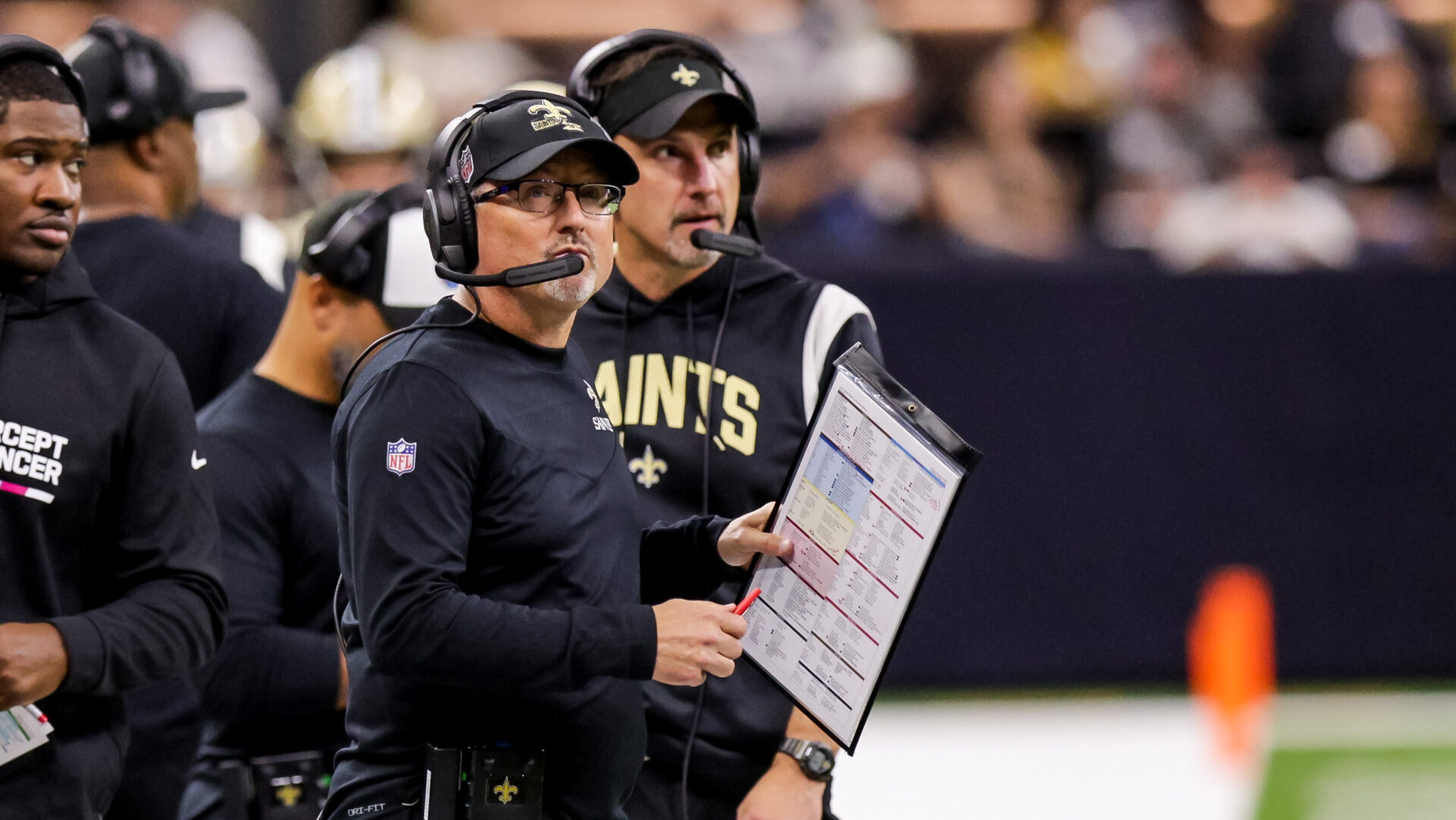
 Pete Carmichael, OC
Pete Carmichael, OC
Pete Carmichael has been with the New Orleans Saints since Payton took over in 2006. Though Carmichael later became the offensive coordinator in 2009, nobody ever mistook him as the real reason behind the Saints' offensive success. Credit always went to Payton and Brees.
Last season was Carmichael's first chance to work not under Payton's shadow.
Unfortunately, Carmichael's chance to spread his wings didn't align with where the Saints were as a franchise. The Saints' offense was in retool mode, and injuries only made that worse. Winston and Andy Dalton started at quarterback, first-round left tackle Trevor Penning missed the entire season and wide receiver Michael Thomas missed most of the season. Rookie wide receiver Chris Olave was an immediate star, but he was kind of a one-man show. The cupboards were pretty bare.
The Saints are giving Carmichael a real chance this year. The team explored every avenue to reinvent its offense for 2023. Free agency, trade market, draft — you name it. New Orleans wants to compete in a wide-open NFC South.
That starts with the quarterback. For all his flaws, Derek Carr brings the same stability Dalton gave them last season, along with a much higher ceiling. Carr's ability to throw tight windows and push the ball downfield can give the Saints' offense the spark it needed last year. The best version of Carr is a player who knocks at the door of league's top 10 quarterbacks, and that's miles better than what the Saints had at the position last year.
The rest of the Saints' offense fills out nicely, too. Olave is a true No.1 receiver, and Thomas is coming into the season healthy. Rashid Shaheed can be the team's designated burner. Even rookie sixth-round pick A.T. Perry looked like a big, movable piece as the offense's fourth receiver. There's no shortage of depth and versatility.
Tight end Juwan Johnson brings all the juice you'd expect of a former wide receiver. Behind Johnson, the trio of Foster Moreau, Hill and Jimmy Graham can all offer a little something in limited doses. At running back, Jamaal Williams and rookie Kendre Miller complement each other to perfection, not unlike Mark Ingram and Alvin Kamara in the late 2010s.
Carmichael got a pass last year. It was a test run season with no real answer at quarterback. There won't be any excuses this time around. The Saints have the pieces for success on offense. Shooting to be one of the NFL's top 10 offenses may be ambitious, but Carmichael has to put together an above-average offense with this group or his long tenure in New Orleans may finally come to an end.

